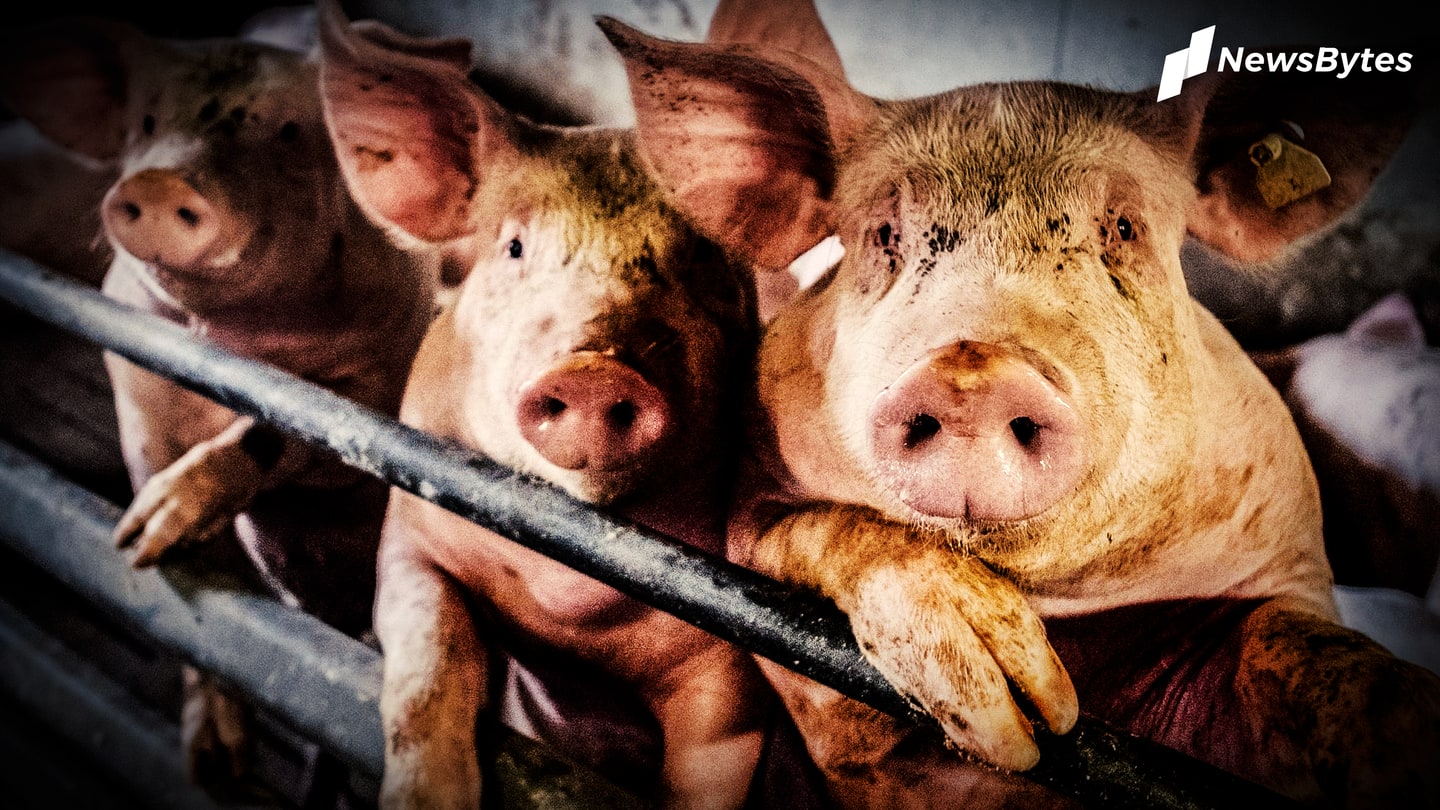
New virus with 'pandemic potential' emerges in China
What's the story
While the world is grappling with coronavirus, which originated in China, worrying details of a new virus have emerged.
A study has disclosed that a large number of Chinese pigs are contracting a new strain of H1N1 virus, that could transmit to humans and trigger another pandemic.
Though there is no imminent threat, the virus needs to be watched closely, researchers said.
Here's more.
Virus
The new virus descends from H1N1 virus
The new virus has been named G4 EA H1N1 and has its origins in the H1N1 strain, which caused an outbreak in 2009. The pandemic had lasted 18 months and killed nearly 19,000.
Researchers learned about the G4 virus after judging nasal swab samples, collected from nearly 30,000 pigs spread over slaughterhouses in 10 Chinese provinces.
The samples were collected between 2011 and 2018.
Danger
The new virus is highly infectious, found researchers
After managing to isolate 179 swine flu viruses, the scientists found that majority of them were a new kind, dominant in pigs since 2016.
Thereafter, they conducted various experiments, including those on ferrets, as they show human-like symptoms, to conclude that the G4 virus is highly infectious.
The immunity that humans may have developed due to seasonal flu provides no protection against this virus.
Transmission
Researchers believe the virus has already jumped to humans
As per the paper, published in Proceedings of the National Academy of Sciences (PNAS), the virus has already jumped to humans, and 10.4% of swine workers have been infected.
Though there's still no evidence to show it can be transmitted from humans, researchers are concerned that "human infection of the G4 virus will further human adaptation and increase the risk of a human pandemic".
Experts' take
World busy with coronavirus, but can't ignore new viruses: Experts
While noting that millions in China live close to farms, slaughterhouses, and wet markets, the study called for monitoring those who work closely with pigs.
Experts opined against taking this threat frivolously.
United Kingdom's Nottingham University's Professor Kin-Chow Chang said the world is occupied with COVID-19, but it shouldn't lose sight of potentially dangerous viruses too.
"We should not ignore it," he told BBC.
Statement
"Farmed animals can become source for pandemic viruses"
Taking the same tone, James Wood, HOD of Veterinary Medicine at Cambridge University, indicated micro-organisms continue to threaten the world.
"The work comes as a salutary reminder that we are constantly at risk of a new emergence of zoonotic pathogens and that farmed animals, with which humans have greater contact than with wildlife, may act as the source for important pandemic viruses," he said.
Quote
Another expert drew attention to crucial aspect of the virus
Separately, Carl Bergstrom, a biologist at the University of Washington, asserted there is no evidence about human-to-human transmission. "There's no evidence that G4 is circulating in humans, despite five years of extensive exposure. That's the key context to keep in mind," he tweeted.
Coronavirus
Meanwhile, WHO said coronavirus pandemic isn't nearing its end
On a related note, the world's fight with coronavirus will be a long one, the World Health Organization mentioned on Monday.
The global body said the pandemic is not even close to its climax, despite claiming more than 500,000 lives globally.
While few countries have shown some progress, the pandemic is actually speeding up, WHO said, adding that contact tracing is extremely essential.